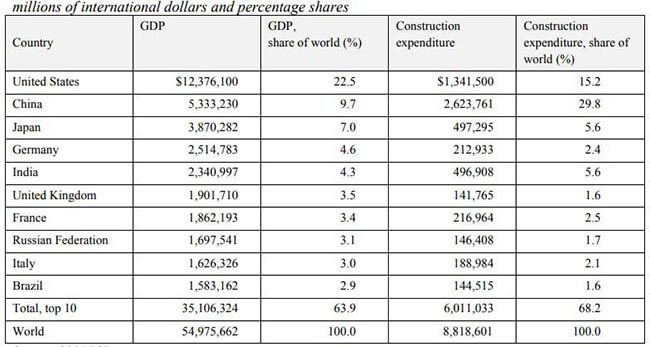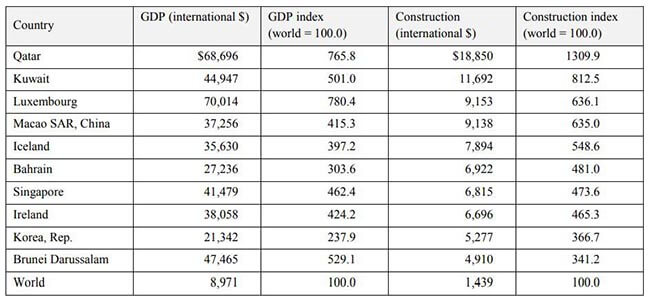Rebar tying is one of the most labor-intensive jobs in construction projects. Concrete has high compressive strength, but has relatively weak tensile strength. Due to its low tensile strength, concrete can become easily cracked. Consequentially, reinforcing bars/rebar structures are used to increase the tensile strength of concrete.
These reinforced bar structures are made by tying reinforced bars together with the help of a wire or by twisting the bars. Tying by hand requires a lot of force and workers have to make repeated, fast hand and arm twisting movements and thus, there are high chances of developing hand-wrist complaints and upper limb injuries. Also, working on ground frequently and prolonged stooping and bending also increases the risk of lower back injuries.
However, using rebar tiers reduces the risk of hand-wrist disorders. Moreover, they also make working in a standing position easier which also prevents prolonged stooping and bending, thereby reducing the chances of lower back injuries. Other than this, rebar structures are also used for fixing underfloor heating coils and casing pipes, etc.
There are broadly two types of rebar tiers categorized on the basis of source i.e manual and battery operated. In a battery operated rebar tier, the tool head is placed over the joint and the trigger is pressed and the area is tied off, some of the rebar tiers also have the feature of adjusting tension control.
Rebar Tiers are extensively used for creating reinforced iron bar structures for various construction projects. Significantly growing construction industry across the globe is anticipated to be the key factor driving the demand for rebar tiers during the forecast period. Growing urbanization across developing countries of Asia Pacific and Latin America is expected to boost the demand for commercial buildings, institutes and hotels, which in turn, is expected to add to the growth of rebar tier market in near future.
Rising infrastructural development coupled with conversion of rural areas into metro cities across the globe is another factor adding to the growth of rebar tier market. Furthermore, increasing adoption of battery operated automatic rebar tiers in growing industries, such as automotive, marine etc., is expected to fuel the demand for rebar tiers, thereby creating significant growth opportunities for the manufacturers in mentioned market.
Rebar tiers can reduce the time spent on training and development of labor and execution of repetitive motions. End users can also save money and time by reducing man hours while increasing efficiency and labor productivity with the increasing learning curve. Rebar tiers also reduce much of the tedious, monotonous work apart from substantially decreasing health risks.
The global Rebar Tiers market is segmented into the following regions -- North America, Latin America, Western Europe, Eastern Europe, South East Asia-Pacific, China, Japan, India and the Middle East and Africa. In terms of production, China has been dominating the Global Rebar Tiers market as it a major hub for manufacturing as well as major exporter.
In terms of consumption, growth observed in the construction industry coupled with increasing demand for infrastructural developments is estimated to spur the demand for rebar tier equipment in countries, such as China, India and ASEAN, etc. Also, the market for rebar tiers in the Middle East and Africa region is anticipated to hinge on the performance of construction and Oil & Gas industry in the upcoming years as well.
Source – World Bank, 2005


Source – World Bank, 2005
The key players ruling the global Rebar Tiers market are MAX USA CORP., Benner-Nawman, Inc., Wacker Neuson SE, PEXGUN, Rapid Tool Australia Pty Ltd, BN Products USA, XLYLTRON, Taizhou Xindalu Electronic Technology Co., Ltd., etc.
Increasing opportunities in the construction industry due to growth in urbanization, industrialization, etc. are expected to create demand for rebar tier equipment in the forthcoming years. With the market being less concentrated, opportunities for market entrants are projected to be on the optimistic side with focus on regional/ local markets by market participants. The value chain is also anticipated to expand due to an influx of product suppliers and retailers catering to high sales volume demand from consumers earning attractive trade margins.
FMI will follow a modelling-based approach and triangulation methodology to estimate data covered in this report. A detailed market understanding and assessment of the nature, product type and end uses of the product segments covered in the study is followed by a demand-side analysis to estimate the sales of target product segments, which is then cross-referenced with a supply-side assessment of value generated over a pre-defined period. The statistics and data is collected at a regional level and consolidated and synthesized at a global level to estimate the overall market sizes.
Some of the key data points covered in our report include:
The research report presents a comprehensive assessment of the market and contains thoughtful insights, facts, historical data, and statistically supported and industry-validated market data. It also contains projections using a suitable set of assumptions and methodologies. The research report provides analysis and information according to market segments such as geographies, application, and industry.
The report is a compilation of first-hand information, qualitative and quantitative assessment by industry analysts, inputs from industry experts and industry participants across the value chain. The report provides in-depth analysis of parent market trends, macro-economic indicators and governing factors along with market attractiveness as per segments. The report also maps the qualitative impact of various market factors on market segments and geographies.
The global Rebar Tier market can be segmented on the basis of mode of operation, end use and regions.
On the basis of mode of operation, the global Rebar Tier market can be segmented as follows:
On the basis of end Use, the global Rebar Tier market can be segmented as follows:






Full Research Suite comprises of:
Market outlook & trends analysis
Interviews & case studies
Strategic recommendations
Vendor profiles & capabilities analysis
5-year forecasts
8 regions and 60+ country-level data splits
Market segment data splits
12 months of continuous data updates
DELIVERED AS:
PDF EXCEL ONLINE
Steel Rebar Market Size and Share Forecast Outlook 2025 to 2035
Fiber Reinforced Polymer (FRP) Rebars Market Size and Share Forecast Outlook 2025 to 2035

Thank you!
You will receive an email from our Business Development Manager. Please be sure to check your SPAM/JUNK folder too.
Chat With
MaRIA